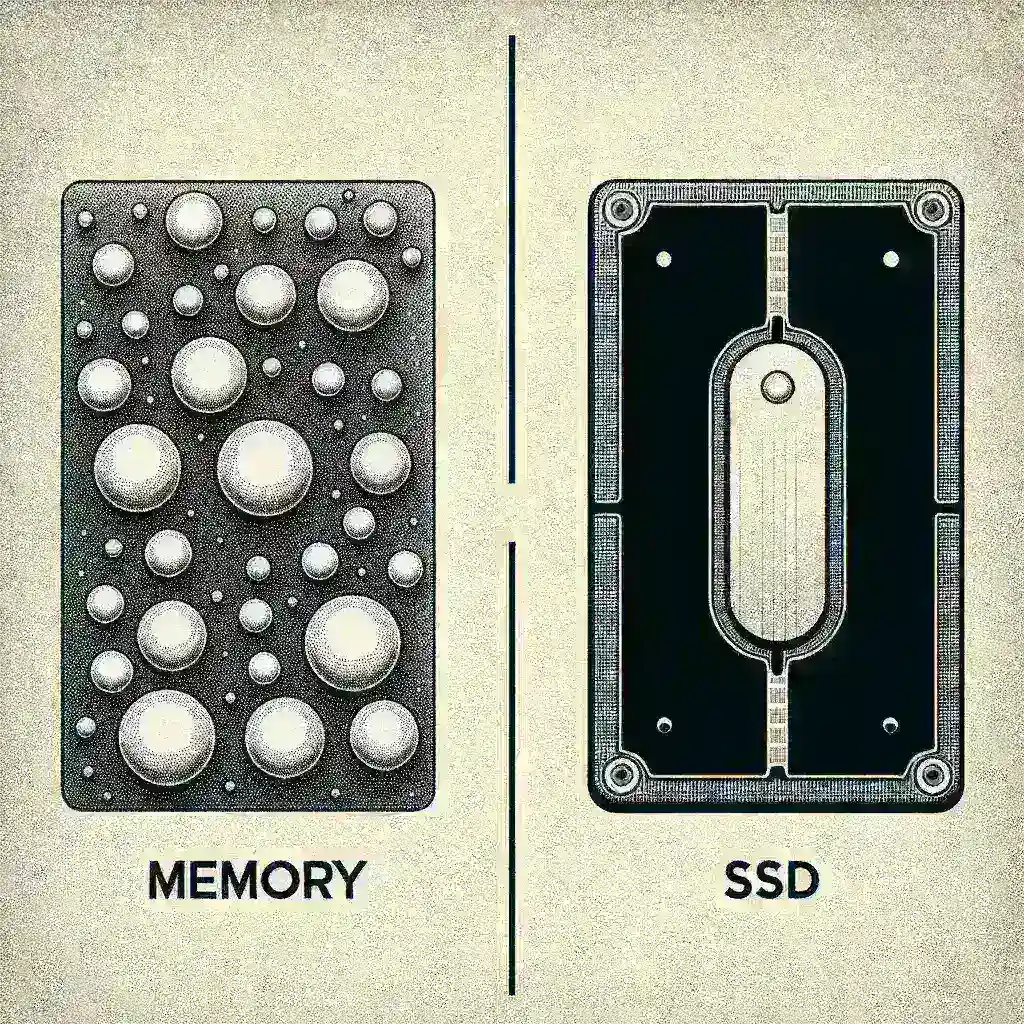Introduction
Before the era of solid-state drives (SSDs) revolutionized data storage, an intriguing technology known as bubble memory played a significant role in the evolution of computer memory. This article delves into the history, functionality, advantages, and unique characteristics of bubble memory, providing insight into its relevance in the technological landscape prior to the ubiquitous use of SSDs.
What is Bubble Memory?
Bubble memory is a type of non-volatile storage technology that was developed in the 1970s and 1980s. It consists of small magnetic domains or “bubbles” that can be manipulated to represent data. These bubbles are stored in a magnetic medium and can be moved around using electrical signals. The fundamental principle behind bubble memory is based on magnetic domains that can be switched on and off, allowing for data to be retained even when the power is turned off.
The Inception of Bubble Memory
The invention of bubble memory can be traced back to the work of Robert H. Dennard at IBM. In the early stages of computer development, memory technology was primarily reliant on magnetic core memory and later, semiconductor technologies. However, as the demand for faster and more efficient data storage grew, researchers sought alternative solutions. This led to the exploration of bubble memory, which promised both speed and non-volatility.
How Bubble Memory Works
- Formation of Bubbles: The core of bubble memory technology involves the creation of small magnetic bubbles in a thin film of magnetic material. These bubbles can be thought of as tiny bits of data.
- Reading and Writing Data: Data is written to bubble memory by creating or destroying these bubbles using magnetic fields. When a bubble is formed, it represents a binary “1”; when it is absent, it represents a binary “0”.
- Data Movement: The movement of bubbles through the medium allows for data retrieval. By applying specific magnetic fields, the bubbles can be directed to particular locations for reading.
- Non-Volatility: One of the key characteristics of bubble memory is its non-volatile nature, meaning data is retained even when the device is powered off.
Historical Context of Bubble Memory
During the late 1970s and early 1980s, bubble memory gained traction as a potential alternative to existing memory technologies. Various companies and research institutions invested in its development, recognizing the unique advantages it offered. At the time, the computer industry was experiencing rapid growth, with increasing demands for data storage solutions that could keep pace with processing speeds.
Advantages of Bubble Memory
- Non-Volatile: Unlike volatile memory types like RAM, bubble memory retains data after power loss, making it highly reliable for storage.
- Durability: Bubble memory is resistant to shock and vibration, which made it ideal for portable devices.
- Low Power Consumption: The technology required less power compared to traditional magnetic storage systems, contributing to energy efficiency.
- High Density: Bubble memory could achieve greater storage densities, allowing for more data to be stored in a smaller physical space.
The Rise and Fall of Bubble Memory
Initial Adoption
Throughout the 1980s, bubble memory found applications in niche markets, particularly in military and aerospace technologies where reliability and durability were paramount. Devices such as portable computers and specialized instrumentation benefited from bubble memory’s unique characteristics.
Challenges and Limitations
Despite its advantages, bubble memory faced significant challenges. The technology struggled to compete with the rapidly advancing semiconductor memory industry, which was producing faster and cheaper alternatives, such as dynamic RAM (DRAM) and static RAM (SRAM). Additionally, the complexity of bubble memory’s manufacturing process and its relatively limited data transfer speeds hindered widespread adoption.
The Transition to SSDs
As the 1990s approached, the landscape of data storage was shifting dramatically. The introduction of flash memory, a type of non-volatile memory that offered faster read/write speeds and lower costs, began to eclipse bubble memory technology. SSDs, utilizing NAND flash memory, became the preferred solution for data storage in consumer electronics.
Legacy of Bubble Memory
Although bubble memory eventually fell out of favor, its impact on the development of non-volatile storage cannot be overlooked. The research and innovations surrounding bubble memory paved the way for future advancements in memory technology, influencing the designs of subsequent non-volatile memory solutions.
Future Predictions for Non-Volatile Memory
As we move further into the digital age, the demand for faster, more efficient, and reliable storage solutions continues to grow. While SSDs currently dominate the market, emerging technologies such as 3D NAND and MRAM (Magnetoresistive RAM) are on the horizon, which promise to enhance storage capabilities even further. In this landscape, the lessons learned from bubble memory’s development and commercialization remain relevant.
Conclusion
Bubble memory may be a relic of the past, but its contributions to the field of computing are invaluable. This technology not only served a critical role in the evolution of memory solutions before the advent of SSDs but also provided a foundation for future innovations. As we look to the future, understanding the history of such technologies helps us appreciate the rapid advancements we experience today.
References
While specific references are not provided in this article, numerous historical accounts and technical documents detail the development and applications of bubble memory, offering a wealth of information for those interested in exploring this fascinating subject further.



